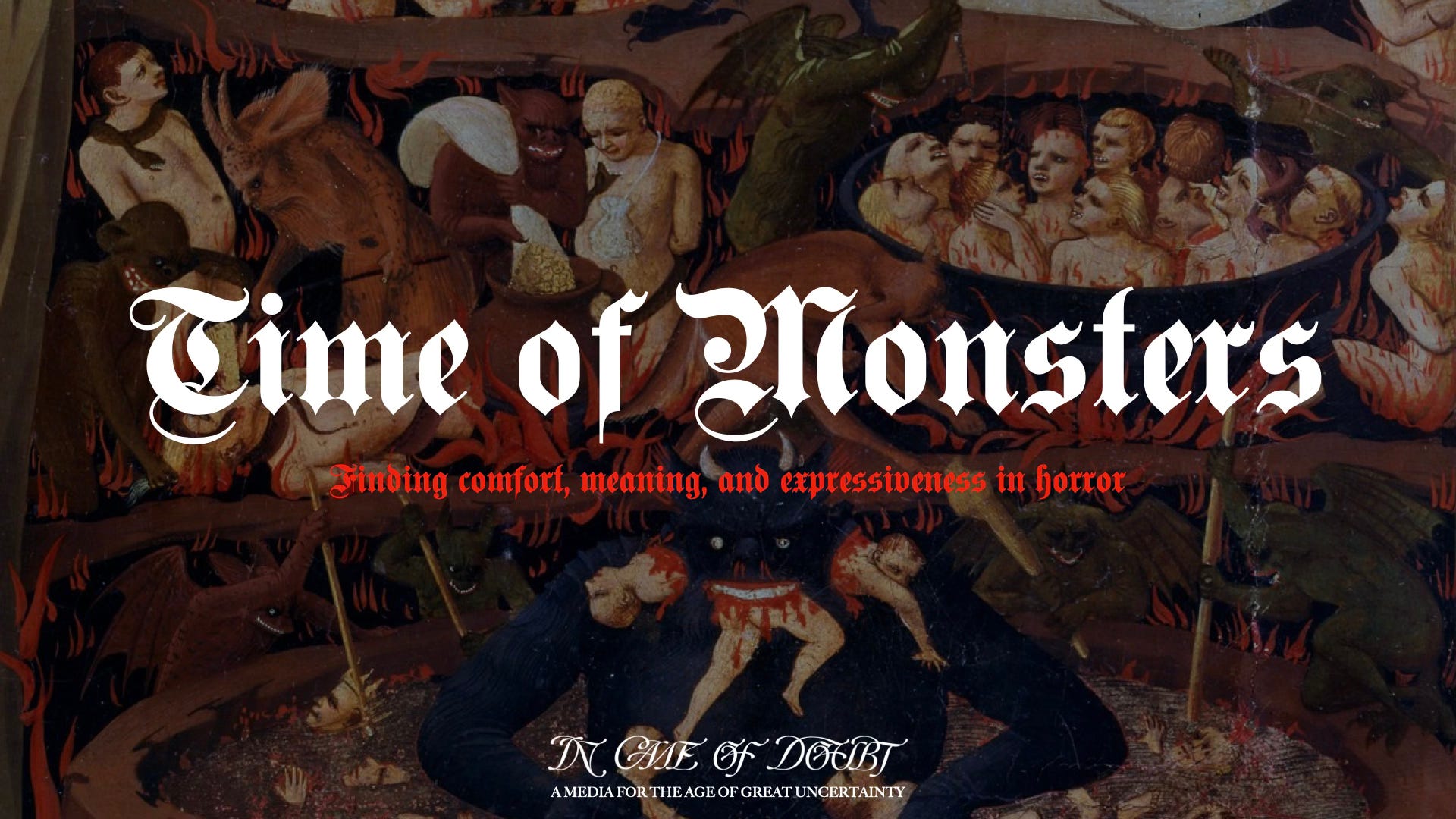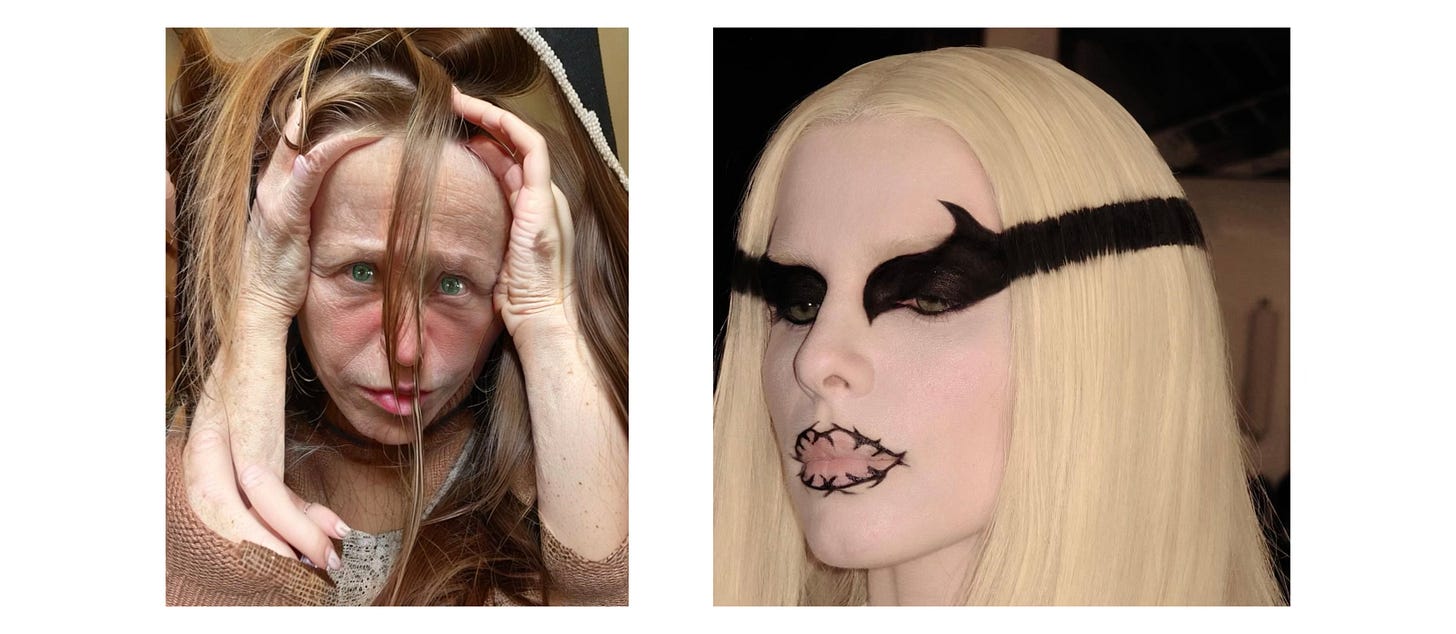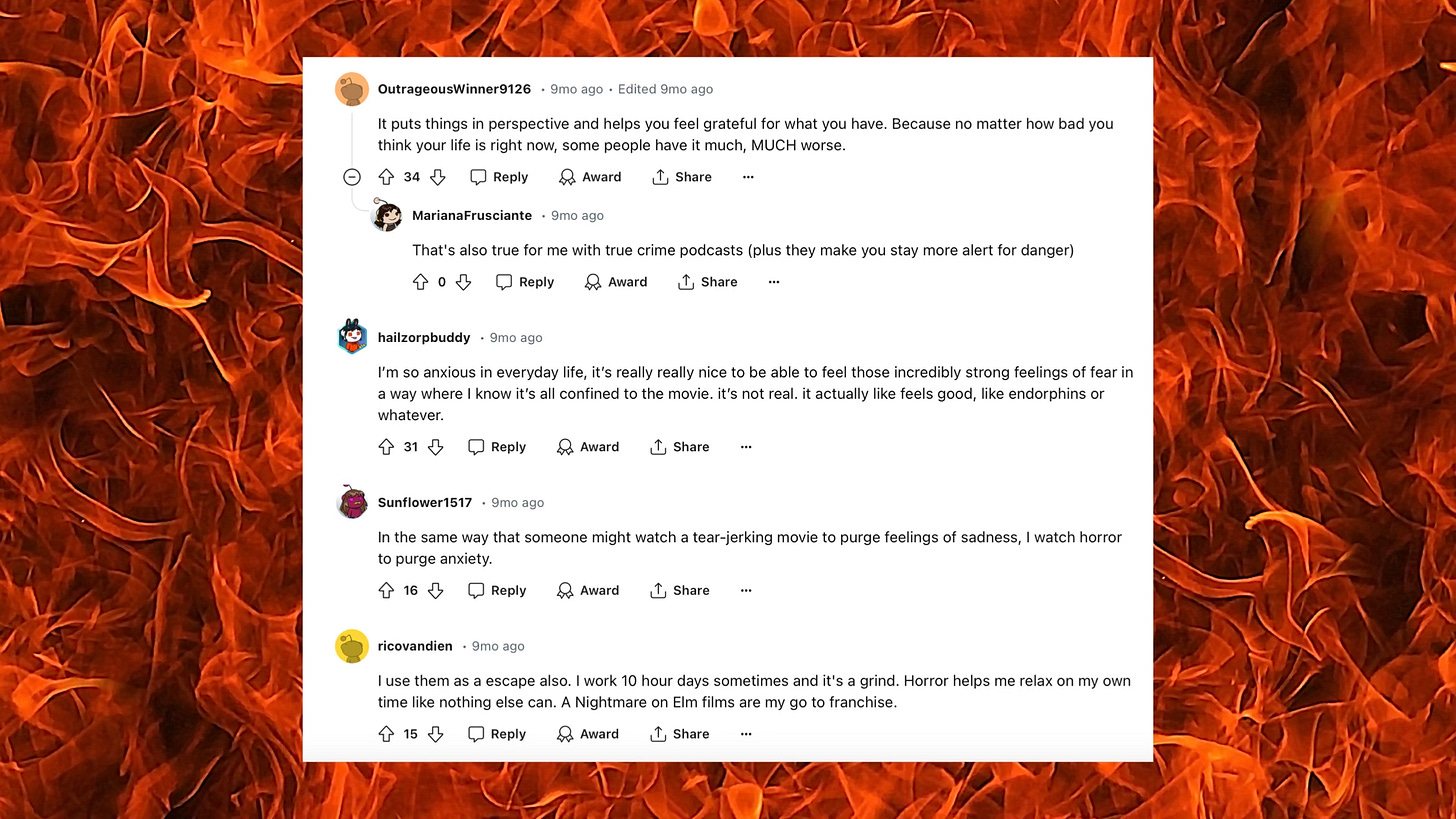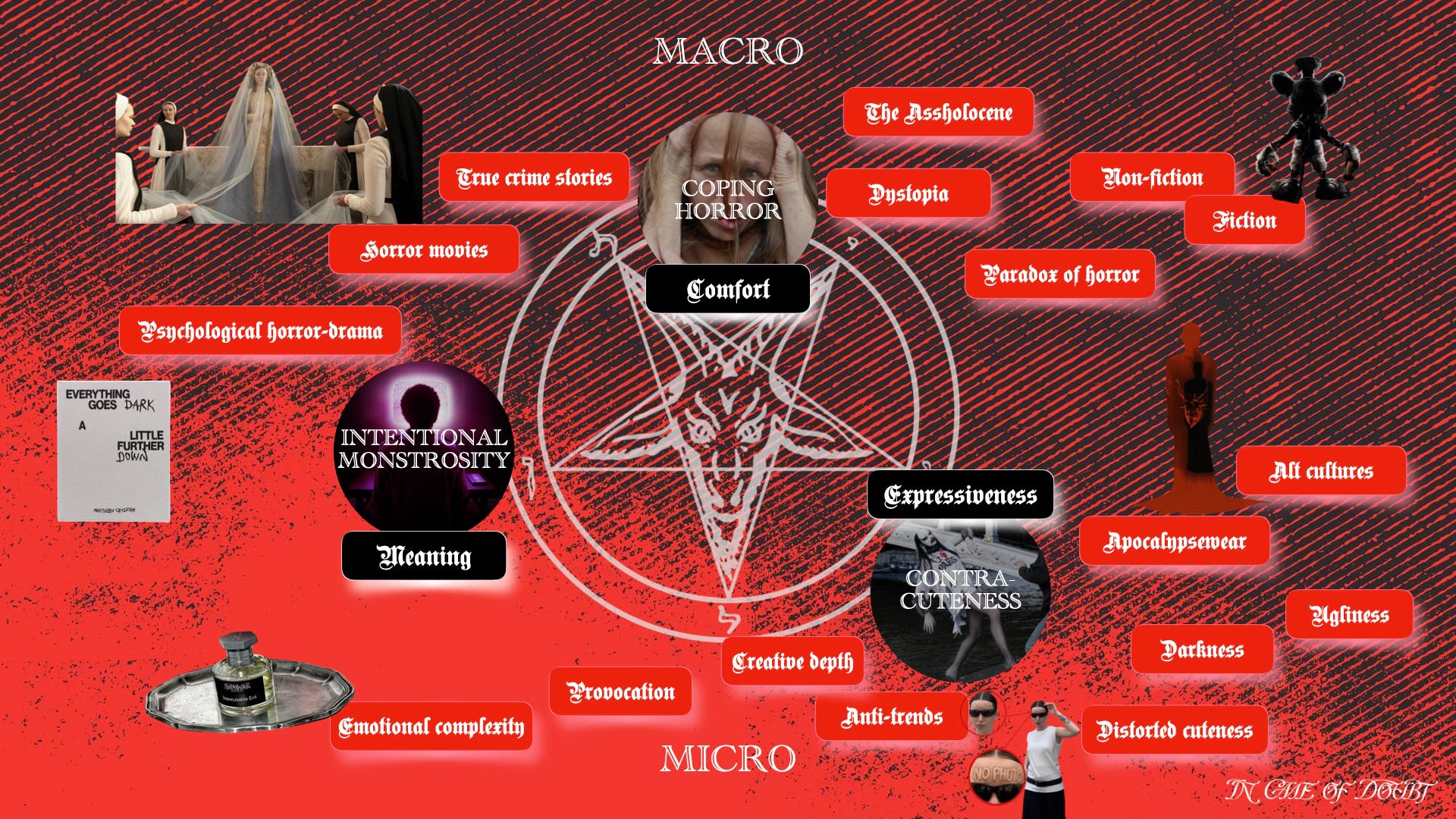“The old world is dying, and the new world struggles to be born: now is the time of monsters.”
— Antonio Gramsci, philosopher, linguist, journalist, writer and politician, in Prison Notebooks
Coping Horror
Reviewing 2023? That’s what Kyle Chayka, staff writer for The New Yorker, has done when attempting to pin a name to call our chaotic era. From James Bridle’s ‘New Dark Age’, Caesar Baronius’ ‘saeculum obscurum’, and Liz Lenkinski’s ‘the Age of Unhingement’, to ‘The Terrible Twenties’ and ‘The Assholocene’, all the naming options converged towards unpleasant, dark, and extremely uncertain times.
No matter the winning name, “now is the time of the monsters”. Halloween is not around the corner, and the horror associated with the season has already become a normalised reality. No need to remind us of our contemporary permacrisis truth, but the everything-scary dominates our era: wars are scary, climate change is scary, AI is scary, political unrest is scary. Scary and non-fictional.
In this everything-scary landscape, horror is in fashion, from the Apocalypsewear and Doom Dressing, to the popularity of Julia Fox as the “queen of Avant Apocalypse” and the rising success of horror as a cultural and entertainment theme.
Horror movies are the 4th most popular movie genre in Canada and the USA between 1995 and 2023, with a 34.3 billion U.S. dollars total box office revenue, equalling comedy. — Statista, 2024
Horror movies are US Gen Z’s third most favourite movie genre (28%), next to comedy (41%) and action (29%). — Deloitte, 2022
Horror’s popularity grows well beyond the arrival of the Halloween season: as of October 2023, the 43 horror films released theatrically last year had already generated more revenue than the genre’s total box office in 2022. — Nielsen, 2023
Last year, nearly a quarter (24%) of top-ranked podcast shows in the US focused on true crime stories — compared to politics and government (10%); entertainment, pop culture, and the arts (9%); and self-help and relationships (8%). — Pew Research Center, 2023
Capitalising on this phenomenon and expected for January 2025, the film Screamboat will star Mickey Mouse’s first representation from Steamboat Willie — who entered the public domain on January 1, 2024 — as an evil character named ‘Murderous Mouse’ terrorising New Yorkers on a late-night ferry trip.
Horror as a contemporary hit is anchored in the “paradox of horror”, a state in which being scared, under the right circumstances of recreational fear, can be fun and beneficial. When examining the positive outcomes of horror, researchers for the Journal of Media Psychology identified three horror fan personae: ‘Adrenaline Junkies’ reporting immediate enjoyment from horror, ‘White Knucklers’ reporting personal growth, and ‘Dark Copers’ benefiting from both effects. “These results suggest that frightening leisure activities are not only an outlet for sensation-seeking, and that the allure of horror may have as much to do with learning and personal growth as it has with high-arousal fun”, commented the team behind the research.
Beyond the educational benefits, horror genres also cater to audiences in search of solace, fantasy, and escape, and act as another form of romanticising the apocalyptic, everyday life.
55% of adults who entered an extreme haunted house said they felt better after the visit. — National Library of Medicine, 2019
“It’s been said that horror gains popularity in troubled times because it provides us with a distraction from the terrors of the real world [...] Horror drags us away from expansive, existential fear and into acute terror, sharpened to a knife’s edge. For just a little while, we can sit under our blankets and worry about the monster under the bed instead of the troubles of our world.” — CrimeReads, 2023
Intentional Monstrosity
Attuned to the prevailing wokeism of our times, horror transcends its entertaining and coping power to get charged with deeper, higher meanings. By harnessing monstrosity, the dystopic genre acts as a weapon to explore key messages of our non-fictional Time of Monsters in a fantasised, yet disturbing and terrific, way.
“By fictionalising the causes of the ‘dystopian shift’, series identify and highlight problematic societal issues, likely to lead to undesirable futures. Ultimately, beyond delivering a simple critique, dystopian series offer an invitation to engage in collective reflection on the issues portrayed in fiction, leaving viewers with the responsibility to avoid the catastrophes they describe and to reimagine more hopeful futures.” — Marine Mallet, PhD and researcher at DIGISCREENS Project in The Conversation France
Unlocking horror’s dystopic value as a channel to document a not-so-dystopic reality, The Opioid Crisis Lookbook in 032c’s new summer issue is “a historic and aesthetic study of America’s drug epidemic”: “OCL depicts the horror of the crisis, creates empathy and contextualizes it in a jokey, meme-like way, showing that the magazine isn’t pure gloom… but is also beautiful, senseless, funny… and a weapon of empowerment.”
Back to horror movies, psychological horror-drama I Saw the TV Glow by Jane Schoenbrun was initially released in January 2024 and explores queer isolation within American suburbia. Rooted in psychological terror, the film follows Owen, a sheltered adolescent whose relationship with his favourite TV show, The Pink Opaque (a fictional hybrid of Buffy the Vampire Slayer and Are You Afraid of the Dark?) acts as an escape from his oppressive suburban home life.
Denouncing queerness’ rejection in the face of normal-vs-abnormal social constructions through a monstrous show is also the chosen path of Swiss artist and photographer Matthieu Croizier in his book Everything Goes Dark A Little Further Down. Recently published by MÖREL, the book is inspired by a range of cultural references embedded in terror, “from 19th Century medical archives and freak shows, to cult classic horror like David Lynch’s Eraserhead”, and “explores the idea of monstrosity in relation to [Matthieu Croizier’s] own queerness”.
Outside the screen and pages, London-based techno rave performance art platform INFERNO operates under a name synonymous to ‘hell’, reflected in its dark, demonic visual universe, and “champions trans+, non-binary and queer DJs and performers.”
Fiction keeps meeting reality in horror, a genre anchored in the persisting male gaze. “Horror has a history of misogyny. For a long time, women in horror were typically hypersexualized and often punished for their sexuality.” explains University of Florida professor Dr. Julia M. Mollenthiel. But paradigms are shifting. Euphoria’s and The White Lotus’ actress Sydney Sweeney, usually depicted in explicit sexual situations and massively dehumanised in favour of her body and beauty, was both the star and producer of Immaculate released in March 2024. The eerie and bloody horror film depicts her as Sister Cecilia, a young Catholic novice living in an idyllic convent, secluded from the modern world. Similarly to I Saw the TV Glow, Immaculate establishes a peaceful sense of isolation before turning it into the protagonist’s greatest adversary. The monsters isolate and steal bodies. Echoing Sydney Sweeney’s stolen body (stolen by the male gaze, by the media, by social media’s commentators, and basically, by everyone), Sister Cecilia is a virgin who finds herself miraculously pregnant — “In Immaculate, Sydney Sweeney is reclaiming her body” titled Dazed Beauty.
Contra-Cuteness
Doesn’t it sound counter-intuitive to highlight horror-inspired narratives as opposed to the contemporary success and acceleration of cute, coquette, and soft visual trends? Similarly to Sydney Sweeney’s attempt to reclaim her body in Immaculate, the horror genre is harnessed to regain creative depth.
“While my girlfriends were turning themselves into ballerinas and princesses, I was more interested in turning into monsters or witches.” — Cindy Sherman, American artist and the Queen of Art-Gore, in System FW14 issue No. 4 questioning ‘Do you find beauty in horror?’
“Most beauty doesn’t have a lot of depth, whereas grotesque and ugly things really do.” — Isamaya Ffrench, make-up artist, in conversation with Jordan Wolfson, visual artist, in System Beauty FW23 issue No. 2
Cohabiting with cuteness, the horror theme can be spotted on the curated fashion and art marketplace APOC STORE championing emerging designers: Marseille-based visual artist Julia Bonich’s artwork embraces distorted cuteness as an entry point to horror; while Belgian ceramic artist and fashion designer Naomi Gilon’s “fantastical ceramic creations encapsulate both terror and the sublime” since her 2017 collection Monstrous; and the label Raw Nails aims “to create a different beauty, which many others may find ugly”, through the use of terrific and disturbing organic materials.
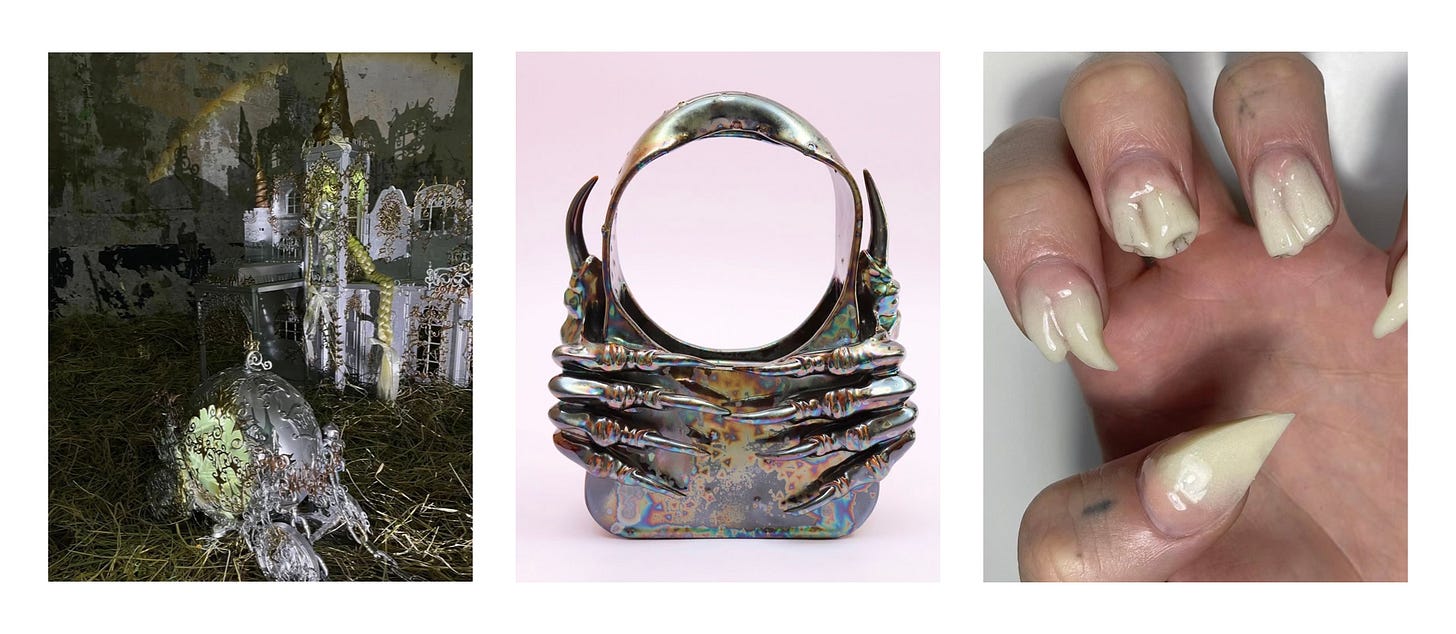
Contra-cuteness horror further opens doors to alternative cultures, as per Tokyo-based independent magazine GATA celebrating dark imaginaries and movements. The media collaborated with Tokyo brand DRESSEDUNDRESSED on a capsule collection and an exclusive editorial that embody the dark, both launched in May 2024 through the DEMONS exhibition.
Montreal-based design duo Fecal Matter — aka @matieresfecales on Instagram — takes alternative cultures to another level under the evocative tagline “PROVOKE SOCIETY”. Acting as a platform for an affordable clothing line selling on Depop, the label offers reinterpretations of zombies and evil spirits heavily nipped and whittled into Victorian-era extremes. Ironically and provocatively named to denounce humans’ disposable relationship with material possessions, Fecal Matter entered the world of monsters by recently throwing the PARIS HATES ME party at FVTVR club, a new Parisian club dedicated to the underground electronic scene, “to celebrate all those who don’t fit in” and as “an opportunity to let go and be yourself without fear.”
Embracing horror and monstrosity might come as counter-intuitive to coquette and cuteness, but is nonetheless equipped with as much virality potential despite challenging dominant trends. Proof of this is visual artist Alona Sobolevska’s sculptural “art-brut” performing as an extremely viral ode to everything-but-cute aesthetics that sit for creative provocation, rather than conforming to any particular style or preceding movement.
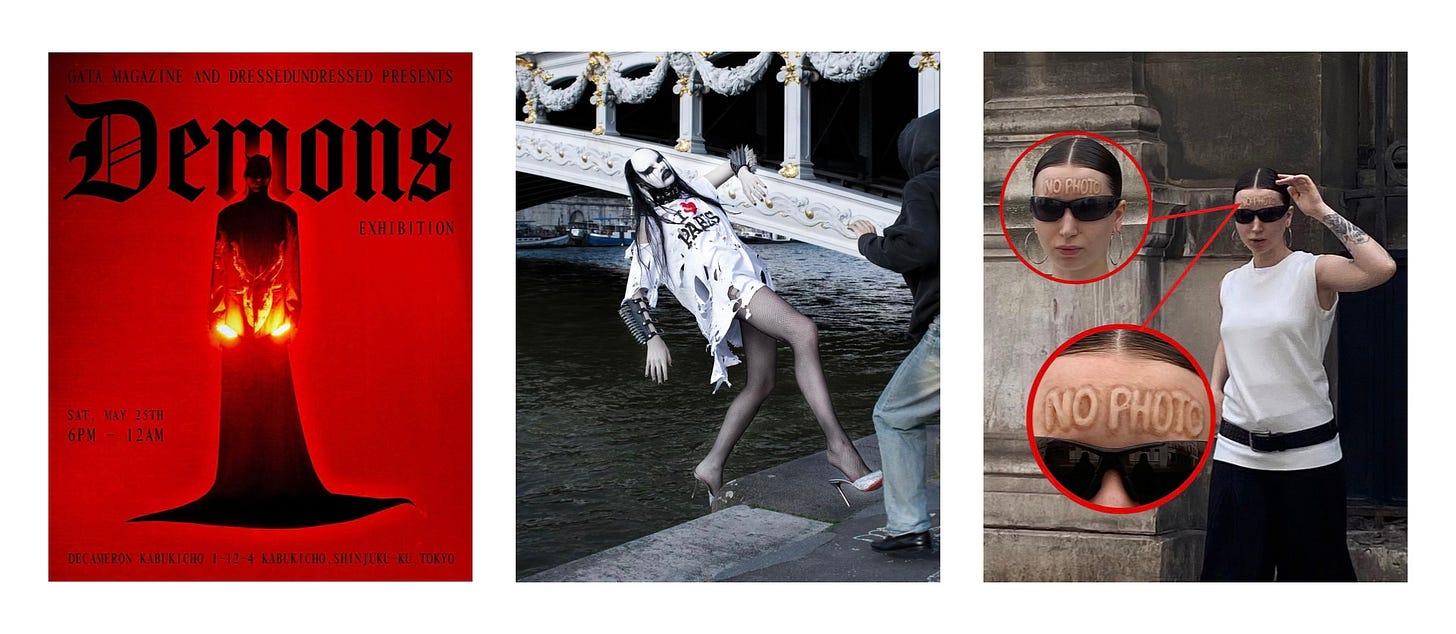
Elsewhere, the world of fragrances flirts with terror with the rise of unorthodox perfumes intended to express complex and dark emotions, beyond pleasant scents — a shift towards unorthodoxy against sameness, as pinpointed by Elena Vosnaki, perfumer and founding member of Fragrantica: “People have become fed up with the same old, same old, over and over again.” The indie brand Toskovat dedicated to creating concept-based perfumes launched Inexcusable Evil, a scent inspired by the flames of evil that contains notes of blood, bandages and burning flowers. These unusual accords undoubtedly move past cuteness while incorporating elements of intentional monstrosity, as they act as a stance on the Russia-Ukraine war: “Inexcusable Evil […] doesn’t allow you to ignore the horrors of war. It applies to one’s skin the trauma that has haunted our species since its dawn. It shows how fragile everything is – our body, our buildings, our lives, and most disappointing of all – our morals,” explains David-Lev Jipa-Slivinschi, the nose behind Toskovat.



